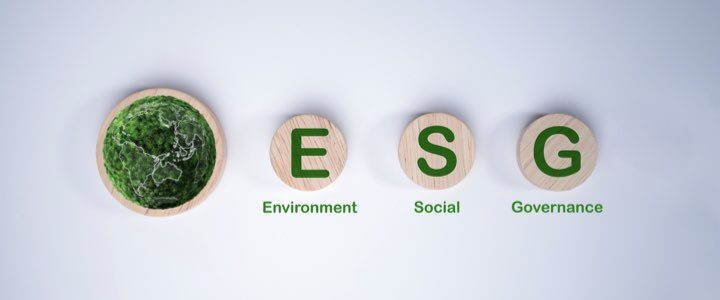Author: Editorial board

Planning for the future: developing effective and measurable ESG strategies
Today we talk about ESG (Environmental, Social, Governance) strategies thanks to the evolution of standards for monitoring the environmental and social impact of companies.
This development is closely intertwined with the man-made ecological disasters of recent decades and the structural and social upheavals and involutions concerning human rights, including workers’ rights.
Today, the adoption of ESG strategies represents an opportunity, if not an obligation, to generate long-term value. Let us delve into the subject together.
Indice:
- ESG, CSR and SDG: what does it all mean?
- ESG regulation: how it works in Europe
- How to measure the effectiveness of ESG strategies
ESG, CSR and SDG: what does it all mean?
In the 1970s, as a result of growing concerns about the social and environmental impacts of business activities, companies began publishing corporate social responsibility (CSR) reports that assessed their ethical, environmental, philanthropic, and economic implications. Initially, these reports focused on short-term admirable actions, such as supporting charities, volunteering, and community involvement. Moreover, they were published separately from companies’ financial reports, proof of how the interconnection between economic performance and external factors relating to environmental, social, and governance standards was still poorly understood.
However, in the late 1990s, when the connection between these two factors started being recognised (albeit to a small extent), companies began to incorporate and link their non-financial actions (in)to information about their financial performance. As the momentum of this real movement grew, companies began to report their environmental and social impacts, sharing statistics and other information on greenhouse gas emissions, energy consumption, water use, and Diversity & Inclusion policies.
However, CSR reporting, while a positive tool, has gained a bad reputation, as it has often been used by companies as a “washing tool”. The emergence and spread of the ESG standards, which cover broader and more nuanced factors than CSR reporting, has led investors and other stakeholders to use them as a framework for estimating the sustainability and ethical impact of companies.
Unlike CSR, ESG strategies publicly identify specific objectives with quantifiable results. Being quantified and measured, these strategies are formulated to demonstrate a company’s actual ESG activities and successes and cannot be easily manipulated.

In 2019, the Business Roundtable, an association of CEOs of leading companies in the United States, abandoned the policy statement of two decades earlier that a company’s primary purpose was to “maximise shareholder returns” and adopted the new purpose statement, declaring that “companies should serve not only their shareholders, but also deliver value to their customers, invest in employees, deal fairly with suppliers, and support the communities in which they operate”.
As public awareness of environmental and human rights issues grows, the ESG standards have gained popularity. They are now increasingly seen as a necessary - and in some cases mandatory - way of doing business. The success of a company is no longer considered separately from social and environmental sustainability: it is an interconnected aspect.
The similarity of ESG factors with the UN SDGs (Sustainable Development Goals) is no coincidence. In fact, ESG strategies are an integral part of the SDGs: the SDGs identify the goals and ESG provides the methods and processes to achieve them. In other words, the ESG strategy promotes the role of companies in overall global sustainable development and identifies contributory practices that companies can incorporate into their operations, products and services. The ESG standards therefore represent a unique opportunity to meet the SDG goals and new legal and market requirements for companies.
ESG regulation: how it works in Europe
The main driver of ESG regulation in Europe is the European Union. All the changes taking place in the EU are based on the European Green Deal, a major policy change to make Europe carbon neutral by 2050.
The European Green Deal aims to promote the efficient use of resources, moving towards a clean and circular economy and the fight against climate change, to preserve and sustain biodiversity and reduce pollution. The tool also outlines what investments are needed and what funding instruments are available, and explains how to ensure a fair and inclusive transition. The European Green Deal covers all sectors of the economy, in particular transport, energy, agriculture, construction, and industries, such as steel, cement, information and communication technology (ITC), textiles, and chemicals.

To comply, companies must prepare a non-financial statement (NFS) that includes information on their ESG policies, risks, and results. The specific content varies depending on the size and nature of the company, but may include policies and performance details on:
- environmental issues including greenhouse gas (GHG) emissions, energy consumption, waste management, and use of natural resources;
- social issues including recruitment practices, working conditions, diversity&inclusion, health and safety, supply chain management, and local community engagement;
- governance structures and practices including board composition and diversity, executive remuneration, and risk management.
How to measure the effectiveness of ESG strategies
A key element for the success of ESG initiatives is measurability. In order to monitor progress, it is necessary to establish KPIs (Key Performance Indicators) covering each area. Here are some examples:
- for the environment: reduction of CO2 emissions, use of renewable energy, reduction of waste;
- for social: percentage of employees involved in training programmes, turnover rate, diversity rates;
- for governance: compliance with reporting deadlines, implementation of regular internal audits, stakeholder feedback.
Technological tools such as ESG management software help monitor these indicators in real time, ensuring agile and adaptable management over time.
In conclusion, the adoption of ESG (Environmental, Social, Governance) strategies represents an opportunity to generate long-term value that can no longer be ignored. Companies that invest in sustainability and social responsibility position themselves as market leaders, gaining the trust of investors, customers, and the community.
Want more information on ESG and corporate sustainability issues? Click on the button below and subscribe to our newsletter!
